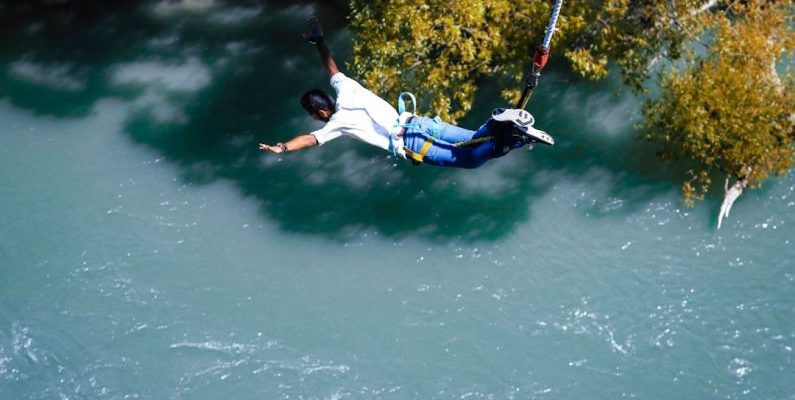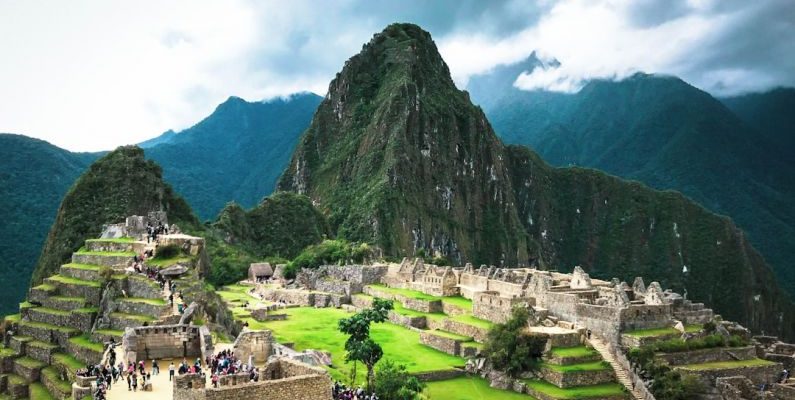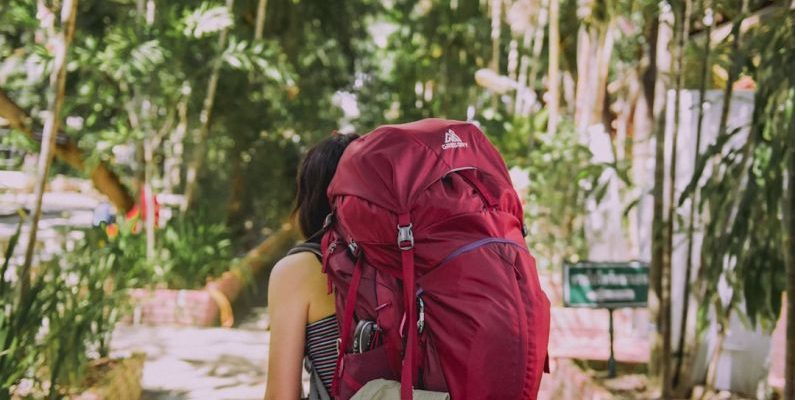Author: vview
New Zealand is renowned for its breathtaking landscapes, adrenaline-pumping adventures, and vibrant culture. Among the myriad of thrilling activities available in this picturesque country, bungee jumping stands out as a quintessential Kiwi experience that promises an exhilarating leap of faith like no other. Nestled amidst the stunning natural beauty of New Zealand, bungee jumping has become a must-do activity for adventure seekers looking to push their boundaries and experience an unforgettable rush of adrenaline.
The Thrill of the Leap
Imagine standing at the edge of a towering cliff, the wind rushing past you, the ground far below beckoning you to take the plunge. This is the moment when bungee jumping in New Zealand truly comes alive. The sheer exhilaration of stepping off the edge and free-falling towards the earth is a sensation like no other. As you hurtle downwards, the world spins around you in a blur of colors and sounds, your heart racing in your chest as you surrender to the forces of gravity.Queenstown: The Adventure Capital
Known as the adventure capital of the world, Queenstown in New Zealand's South Island is a mecca for thrill-seekers from across the globe. Home to the world's first commercial bungee jumping site, the AJ Hackett Bungy Ledge, Queenstown offers a range of bungee jumping experiences that cater to all levels of bravery. Whether you're a first-time jumper looking for a taste of adrenaline or a seasoned thrill-seeker seeking the ultimate challenge, Queenstown has something for everyone.The Nevis Bungy: A Leap Into the Abyss
For those seeking the ultimate bungee jumping experience, the Nevis Bungy is a must-try. Suspended high above the Nevis River, this 134-meter jump is one of the highest bungee jumps in the world and offers a heart-stopping free fall that will leave you breathless. As you plunge towards the river below, the sheer magnitude of the drop is both terrifying and exhilarating, making the Nevis Bungy a truly unforgettable experience for adrenaline junkies.The Kawarau Bridge Bungy: Where It All Began
If you're looking to follow in the footsteps of bungee jumping history, the Kawarau Bridge Bungy is the place to be. This iconic bungee jumping site is where AJ Hackett and Henry van Asch first introduced commercial bungee jumping to the world in 1988, forever changing the landscape of extreme sports. Located just outside Queenstown, the Kawarau Bridge Bungy offers a 43-meter jump that allows you to plunge towards the crystal-clear waters of the Kawarau River, creating a classic bungee jumping experience that pays homage to the sport's roots.Safety First: The Importance of Professionalism
While bungee jumping is undeniably thrilling, safety is paramount when it comes to this high-risk activity. In New Zealand, bungee jumping operators adhere to strict safety standards and regulations to ensure that every jump is as safe as it is exhilarating. From thorough equipment checks to experienced jump masters who guide you through every step of the process, bungee jumping in New Zealand is a well-oiled machine that prioritizes the safety and well-being of its participants above all else.Embracing the Fear: The Psychology of Bungee Jumping
Bungee jumping is not just about the physical act of leaping off a platform; it's also a mental and emotional challenge that forces you to confront your fears head-on. The moment you stand on the edge, your heart pounding in your chest, you are faced with a choice: to succumb to your fear or to embrace it and take the leap. It is this confrontation with fear and the ultimate triumph over it that makes bungee jumping such a powerful and transformative experience for many.In the Face of Fear: Finding Courage and Resilience
As you plummet towards the earth, the ground rushing up to meet you, there is a split second where fear gives way to exhilaration, where doubt is replaced by pure adrenaline. It is in this moment of free fall that you discover a reservoir of courage and resilience within yourself that you may not have known existed. Bungee jumping in New Zealand is not just about the thrill of the jump; it's also about finding the strength to overcome your fears and push yourself beyond your limits, creating a sense of empowerment and liberation that stays with you long after the jump is over.The Aftermath: A New Perspective on Life
After the rush of the jump has faded and your feet are once again firmly planted on solid ground, you are left with a newfound perspective on life. Bungee jumping in New Zealand is not just a physical challenge but a spiritual journey that challenges you to confront your fears, embrace the unknown, and take a leap of faith into the unknown. It is an experience that changes you in ways you never thought possible, leaving you with a sense of accomplishment, resilience, and a renewed zest for life that will stay with you long after you've left the bungee platform behind. In the end, bungee jumping in New Zealand is more than just a thrill-seeking adventure; it is a transformative experience that pushes you to confront your fears, find your courage, and embrace the unknown. So, if you ever find yourself standing on the edge of a bungee platform in the stunning landscapes of New Zealand, remember that the leap you're about to take is not just a physical one—it's a leap of faith that will change you in ways you never thought possible.
In Solo Travel
Solo travel can be a liberating and empowering experience, but for female travelers, safety concerns can sometimes overshadow the excitement of exploring new destinations. Whether you are embarking on a solo journey for the first time or are a seasoned solo traveler, prioritizing your safety should always be at the top of your list. By following some essential safety tips tailored specifically for female solo travelers, you can navigate your adventures with confidence and peace of mind.
Research Your Destination
Before you set off on your solo adventure, take the time to thoroughly research your destination. Familiarize yourself with the local customs, culture, and laws to ensure that you are respectful and aware of any potential risks. Look up safe neighborhoods to stay in, transportation options, and emergency contact information. Understanding the local language or carrying a translation app can also be beneficial in communicating effectively and seeking help if needed.Pack Wisely
When traveling solo, packing light is not just a matter of convenience, but also a safety consideration. Avoid drawing unnecessary attention to yourself by opting for modest clothing that respects local customs and avoids standing out as a tourist. Invest in a reliable anti-theft backpack or purse to keep your belongings secure, and consider carrying a personal safety alarm for added peace of mind. Make digital copies of your important documents, such as your passport and travel insurance, and store them securely in the cloud or email them to yourself.Stay Connected
Maintaining regular communication with friends and family back home is crucial when traveling solo. Share your itinerary and accommodation details with a trusted individual, and check in with them periodically to update them on your whereabouts. Consider using a GPS tracking app on your phone so that your loved ones can monitor your location in real-time. Stay connected to local resources as well, such as embassies or consulates, in case of emergencies.Trust Your Instincts
Intuition is a powerful tool when it comes to personal safety. If something feels off or uncomfortable, trust your instincts and remove yourself from the situation. Avoid sharing too much personal information with strangers and be cautious of accepting invitations from people you have just met. If you find yourself in a challenging or threatening situation, don't hesitate to seek help from authorities or reach out to your support network for assistance.Blend In
One effective way to enhance your safety while traveling solo is to blend in with the local crowd as much as possible. Avoid drawing attention to yourself by dressing conservatively and observing the local dress code. Try to mirror the behavior of the locals and be mindful of your surroundings. Walking with purpose and confidence can deter unwanted attention and project an air of self-assurance.Be Prepared for Emergencies
No matter how well you plan, unexpected situations can arise while traveling solo. Prepare for emergencies by carrying a basic first-aid kit, knowing the location of the nearest hospital or medical facility, and having emergency contact numbers saved in your phone. Consider purchasing travel insurance that includes coverage for medical emergencies, trip cancellations, and lost belongings.Seek Female-Only Accommodations
When booking accommodation during your solo travels, consider staying in female-only hostels or hotels for an added layer of security and comfort. These establishments often have enhanced safety measures in place, such as female-only dormitories or key card access to rooms. Additionally, connecting with other female travelers in a safe and supportive environment can help you feel more at ease during your journey.Conclusion: Empower Your Solo Adventures
By following these safety tips tailored for female solo travelers, you can empower yourself to embrace the world with confidence and independence. While it is essential to be vigilant and prepared, remember that solo travel is also a transformative experience that allows you to discover new cultures, meet inspiring people, and create lasting memories. Trust in your abilities, stay aware of your surroundings, and savor every moment of your solo adventures. Safe travels!
In Eco-Tourism
In our modern world, being conscious of our impact on the environment is becoming increasingly important. This mindset extends to all aspects of our lives, including how we choose to travel. For travelers looking to reduce their carbon footprint and make more sustainable choices, there are a variety of eco-friendly transportation options available. By opting for these environmentally friendly modes of travel, individuals can not only reduce their impact on the planet but also explore new destinations in a more responsible way.
**Eco-Friendly Public Transportation**
One of the easiest ways for travelers to reduce their carbon footprint is by using public transportation whenever possible. Public transportation systems in many cities around the world are well-developed and offer a convenient and sustainable way to get around. Trains, buses, and trams are all great options for eco-conscious travelers, as they help to reduce the number of individual cars on the road, therefore decreasing emissions. Additionally, public transportation can provide a unique opportunity to experience a destination from a local perspective, giving travelers a more authentic and immersive experience.
**Cycling and Walking**
For travelers looking to explore a destination at a slower pace and in a more environmentally friendly way, cycling and walking are excellent options. Many cities and towns around the world are becoming more bike-friendly, with dedicated bike lanes and rental services available for visitors. Cycling not only reduces carbon emissions but also allows travelers to connect more closely with the places they are visiting. Similarly, walking is a sustainable and healthy way to explore a destination, offering the chance to discover hidden gems and interact with locals along the way.
**Electric Vehicles**
As technology continues to advance, electric vehicles are becoming an increasingly popular option for eco-conscious travelers. Electric cars, scooters, and bikes offer a sustainable alternative to traditional gasoline-powered vehicles, producing zero emissions and helping to reduce air pollution. Many destinations are now investing in electric vehicle infrastructure, such as charging stations, making it easier for travelers to choose this environmentally friendly option. Renting an electric vehicle can be a great way to explore a destination while minimizing your carbon footprint.
**Car-Sharing and Ride-Sharing Services**
For travelers who need the convenience of a car but want to minimize their environmental impact, car-sharing and ride-sharing services are excellent options. Companies like Zipcar and Uber offer convenient and cost-effective ways to get around without the need for individual car ownership. By sharing rides with others, travelers can reduce the number of cars on the road and decrease emissions. These services also provide an opportunity to meet locals and gain insight into the best places to visit in a destination.
**Eco-Friendly Cruises and Trains**
When traveling longer distances, eco-friendly cruises and trains can be a more sustainable option compared to flying. Many cruise lines and train companies are making efforts to reduce their environmental impact by implementing energy-efficient technologies and reducing waste. Traveling by cruise or train can also be a more leisurely and scenic way to see the world, offering stunning views and unique experiences along the way. By choosing these modes of transportation, travelers can enjoy a more sustainable journey while exploring new destinations.
**Sustainable Travel Choices for a Greener Future**
As travelers become more aware of the environmental impact of their journeys, the demand for eco-friendly transportation options continues to grow. By choosing sustainable modes of travel, individuals can play a part in reducing emissions, preserving natural resources, and supporting local communities. Whether it's opting for public transportation, cycling and walking, electric vehicles, car-sharing services, or eco-friendly cruises and trains, there are plenty of ways for travelers to make more responsible choices. By embracing these eco-friendly transportation options, travelers can enjoy a greener future while exploring the world in a more sustainable way.
The Renaissance, a period of profound cultural and intellectual transformation that spanned the 14th to the 17th centuries, marked a pivotal moment in European history. This era, often referred to as the "Age of Enlightenment," witnessed a resurgence of interest in art, literature, science, and philosophy, leading to significant advancements in various fields. The impact of the Renaissance was far-reaching, shaping the course of European civilization and laying the foundation for the modern world as we know it today.
The Revival of Classical Learning
One of the defining features of the Renaissance was the revival of classical learning, particularly the rediscovery of ancient Greek and Roman texts. Scholars and artists of the period sought to emulate the achievements of the ancient world, drawing inspiration from works of literature, philosophy, and art that had long been neglected. This renewed interest in classical antiquity fueled a spirit of intellectual curiosity and creativity that permeated all aspects of Renaissance culture.Humanism: Celebrating the Individual
At the heart of the Renaissance was the philosophy of humanism, which emphasized the value and potential of the individual. Humanist scholars championed the idea that human beings were capable of great achievements and should strive to fulfill their intellectual and creative potential. This focus on the individual as a rational and autonomous being laid the groundwork for the development of modern ideas about human rights, individualism, and personal agency.Artistic Innovation and Expression
The Renaissance was a golden age for the arts, with artists such as Leonardo da Vinci, Michelangelo, and Raphael producing masterpieces that continue to captivate audiences to this day. These creative geniuses pushed the boundaries of artistic expression, experimenting with new techniques and styles that revolutionized the art world. The period saw a shift from the flat, stylized figures of the medieval era to more lifelike and naturalistic representations, as artists sought to capture the beauty and complexity of the world around them.Scientific Revolution and Exploration
In addition to advancements in the arts, the Renaissance also witnessed significant progress in the field of science. Visionaries like Copernicus, Galileo, and Kepler challenged prevailing beliefs about the nature of the universe, laying the groundwork for the scientific revolution that would follow. These pioneering thinkers revolutionized our understanding of astronomy, physics, and mathematics, ushering in an era of unprecedented discovery and innovation.The Printing Press: A Catalyst for Change
The invention of the printing press by Johannes Gutenberg in the mid-15th century played a crucial role in spreading the ideas of the Renaissance throughout Europe. This revolutionary technology made it easier and more affordable to produce books, allowing for the rapid dissemination of knowledge and information. The printing press democratized learning, enabling a wider audience to access the works of Renaissance thinkers and fostering a climate of intellectual exchange and debate.Legacy of the Renaissance
The legacy of the Renaissance is evident in the enduring impact it has had on Western civilization. The period laid the foundation for the modern world, shaping our understanding of art, science, philosophy, and human nature. The spirit of creativity, curiosity, and innovation that defined the Renaissance continues to inspire us today, reminding us of the transformative power of human ingenuity and the enduring legacy of Europe's Age of Enlightenment.
Nestled high in the Andes Mountains of Peru lies the magnificent ancient Incan citadel of Machu Picchu, a UNESCO World Heritage site and one of the New Seven Wonders of the World. This iconic archaeological wonder continues to captivate the hearts and minds of travelers from around the globe, drawing them in with its mystique and grandeur. Exploring the ancient ruins of Machu Picchu is a journey back in time, offering a glimpse into the rich history and advanced engineering prowess of the Inca civilization.
Unveiling the Mysteries of Machu Picchu
As you wander through the sprawling complex of Machu Picchu, you can't help but be awestruck by the sheer scale and ingenuity of the ancient Incan architecture. The precision with which the massive stone blocks were cut and fitted together without the use of mortar is a testament to the exceptional craftsmanship of the Inca people. The impressive terraces, temples, and residential buildings that make up the citadel are a marvel to behold, each structure telling a story of a bygone era.Walking in the Footsteps of the Incas
One of the most remarkable aspects of visiting Machu Picchu is the opportunity to walk in the footsteps of the ancient Incas who once called this place home. The network of stone pathways that crisscross the site leads you through a maze of intricately designed buildings and terraces, offering a glimpse into the daily lives of the Inca inhabitants. As you meander through the narrow alleyways and climb the steep stone staircases, you can't help but feel a sense of reverence for the people who built this extraordinary place with nothing but their hands and simple tools.The Sacred Sun Temple
At the heart of Machu Picchu lies the sacred Sun Temple, a structure that was of utmost importance to the Inca civilization. This carefully constructed building is aligned with the movements of the sun, allowing sunlight to illuminate its interior during the winter solstice. The intricate stonework and celestial alignment of the Sun Temple are a testament to the Inca's deep connection with the natural world and their advanced understanding of astronomy.The Intihuatana Stone
One of the most enigmatic features of Machu Picchu is the Intihuatana Stone, a carved granite rock that served as an astronomical observatory and ritual site for the Inca priests. The name "Intihuatana" translates to "hitching post of the sun," indicating its function in capturing the sun's rays during the solstices. The Intihuatana Stone is believed to have held spiritual significance for the Inca people, serving as a link between the earthly realm and the celestial spheres.The Spectacular Views
In addition to its archaeological wonders, Machu Picchu also offers breathtaking panoramic views of the surrounding Andes Mountains and the winding Urubamba River below. The site's strategic location on a high ridge provides visitors with a sense of being on top of the world, surrounded by the awe-inspiring beauty of the natural landscape. Watching the sunrise over Machu Picchu is a truly magical experience, as the first rays of light illuminate the ancient stones and bring the citadel to life in a golden glow.Unraveling the Mysteries of Machu Picchu
As you explore the ancient ruins of Machu Picchu, you can't help but be drawn into the mysteries and legends that shroud this enigmatic site. From its precise alignment with the sun to the intricate stone carvings that adorn its walls, every aspect of Machu Picchu seems to hold a secret waiting to be discovered. While archaeologists have made great strides in unraveling the history of this remarkable place, there is still much that remains unknown about the true purpose and meaning behind the citadel's construction. In conclusion, exploring the ancient ruins of Machu Picchu is a journey of discovery and wonder, offering visitors a glimpse into the remarkable achievements of the Inca civilization. From the sacred Sun Temple to the mystical Intihuatana Stone, every corner of this extraordinary site tells a story of a bygone era and a people whose legacy continues to fascinate and inspire. As you stand atop the high ridge of Machu Picchu, gazing out at the majestic Andes Mountains, you can't help but feel a sense of awe and reverence for this ancient marvel that has stood the test of time.
In Travel Tips
Airline miles are a valuable currency in the world of travel, offering the opportunity to earn free flights and upgrades simply by making everyday purchases. Maximizing your airline miles can lead to significant savings and even allow you to experience luxury travel for a fraction of the cost. By understanding how to strategically accumulate and redeem your miles, you can unlock a world of travel possibilities without breaking the bank.
Understanding Airline Miles Programs
Before diving into the tactics for maximizing your airline miles, it's crucial to have a solid grasp of how airline miles programs work. Most major airlines offer loyalty programs that reward customers with miles based on the distance flown, ticket price, or credit card spending. These miles can then be redeemed for flights, upgrades, hotel stays, and other travel-related perks. By joining these programs and actively accumulating miles, you can set yourself up for free or discounted travel in the future.Strategic Credit Card Usage
One of the most effective ways to earn airline miles quickly is through strategic credit card usage. Many credit card companies offer rewards cards that allow you to earn miles for every dollar spent on purchases. By using these cards for everyday expenses such as groceries, gas, and dining out, you can accumulate miles at a faster rate. Some cards also offer sign-up bonuses, which can provide a significant boost to your mileage balance. Be sure to pay off your balance in full each month to avoid accruing interest and fees that could negate the benefits of earning miles.Take Advantage of Promotions and Bonus Offers
Airlines frequently run promotions and bonus offers that allow you to earn extra miles for specific actions or purchases. Keep an eye out for these opportunities and take advantage of them whenever possible. This could include signing up for a new credit card with a generous sign-up bonus, booking flights during a promotional period, or participating in partner promotions that offer bonus miles for certain activities. By staying informed about these offers and actively engaging with them, you can accelerate your mileage earnings and get closer to your next free trip.Strategic Redemption Tactics
Once you've accumulated a substantial number of airline miles, it's essential to strategize how to redeem them for maximum value. Look for opportunities to book flights during off-peak times or choose less popular routes to get the most out of your miles. Additionally, consider using your miles for upgrades to business or first class, where the value per mile is often higher than for economy seats. Keep an eye out for award seat availability and be flexible with your travel dates to increase your chances of finding redemption options that offer the best value for your miles.Pooling Miles with Family and Friends
Pooling miles with family and friends can be a smart strategy for maximizing your mileage balance and unlocking more travel opportunities. Some airlines allow you to combine miles with other members of your household or travel group, enabling you to book flights that require a higher mileage balance than you have individually. By pooling your miles together, you can access more redemption options and enjoy free trips that might have been out of reach otherwise.Conclusion: Travel More, Spend Less
Maximizing your airline miles for free trips is all about being strategic and proactive in how you earn and redeem your miles. By understanding how airline miles programs work, using credit cards strategically, taking advantage of promotions, and pooling miles with others, you can make the most of this valuable travel currency. With a bit of planning and creativity, you can travel more often and more luxuriously while spending less money out of pocket. Start implementing these tactics today and watch your mileage balance soar as you embark on your next adventure.
In Travel Tips
Traveling can be an exhilarating experience, but choosing the right travel backpack can make or break your trip. With so many options available, it can be overwhelming to select the perfect backpack that meets all your needs. From size and features to comfort and durability, there are several factors to consider before making your purchase. To help you navigate through the sea of backpacks, here are some essential tips on how to choose the right travel backpack.
Size Matters
The first and most crucial factor to consider when selecting a travel backpack is its size. The size of your backpack will largely depend on the duration of your trip and the items you plan to carry. For shorter trips, a smaller backpack ranging from 20-40 liters may suffice, while longer journeys may require a larger backpack in the 50-70 liter range. It's important to strike a balance between having enough space for your belongings and not overpacking, as a heavy backpack can be cumbersome and uncomfortable to carry for extended periods.Comfort is Key
Comfort should be a top priority when choosing a travel backpack, especially if you plan on wearing it for long hours while exploring new destinations. Look for backpacks with padded shoulder straps, a supportive back panel, and a hip belt to help distribute the weight evenly and reduce strain on your shoulders and back. Additionally, adjustable straps and multiple points of adjustment will allow you to customize the fit of the backpack to your body, ensuring maximum comfort throughout your journey.Durability and Quality
Investing in a durable and high-quality travel backpack is essential to ensure that it withstands the rigors of travel and lasts for years to come. Look for backpacks made from sturdy materials such as nylon or polyester, with reinforced stitching and durable zippers that can handle rough handling and frequent use. Water-resistant or waterproof backpacks are also a great choice to protect your belongings from unexpected rain or spills during your travels.Organizational Features
An organized backpack can make your travel experience much more convenient and efficient. Look for backpacks with multiple compartments, pockets, and internal organizers to help you keep your belongings neatly arranged and easily accessible. Some backpacks also come with special features like laptop sleeves, water bottle pockets, and hidden compartments for storing valuables securely.Style and Design
While functionality is crucial, don't forget to consider the style and design of the backpack. Choose a backpack that reflects your personal taste and fits your aesthetic preferences. Whether you prefer a sleek and minimalist design or a more rugged and adventurous look, there are plenty of options available to suit your style.Try Before You Buy
Before making a final decision, it's essential to try on the backpack and test its fit and comfort. Visit a store that carries a variety of backpack brands and styles, and spend some time trying on different options to see which one feels the most comfortable and suitable for your needs. Walk around with the backpack on your back to get a feel for how it sits and whether it distributes weight evenly.Pack Light, Pack Right
When choosing a travel backpack, remember the golden rule of packing light. Avoid the temptation to overpack and opt for a backpack that encourages minimalist packing. Consider versatile clothing and multi-purpose items that can serve multiple functions to help you save space and weight in your backpack. In conclusion, selecting the right travel backpack is a crucial decision that can significantly impact your travel experience. By considering factors such as size, comfort, durability, organizational features, style, and design, you can choose a backpack that meets your needs and complements your travel style. Remember to prioritize comfort and quality, and don't forget to test the backpack before making a purchase. With the right travel backpack by your side, you'll be ready to embark on your next adventure with confidence and ease.
India is a land of vibrant colors, diverse cultures, and rich traditions. But one aspect of Indian culture that truly stands out is its culinary heritage. The spices used in Indian cuisine are not only known for their aromatic flavors but also for their medicinal properties. Embark on a flavorful journey through the spices of India and discover the magic they bring to the country's cuisine.
**A Symphony of Flavors**
Indian cuisine is a harmonious blend of various spices that come together to create a symphony of flavors. Each spice is carefully selected and combined with other ingredients to bring out the unique taste of a dish. From the fiery heat of red chili powder to the warm sweetness of cinnamon, Indian spices offer a wide range of flavors that cater to every palate.
**Turmeric: The Golden Spice**
Turmeric, also known as the golden spice, is a staple in Indian cooking. Apart from adding a vibrant color to dishes, turmeric is also known for its medicinal properties. It contains curcumin, a compound with powerful anti-inflammatory and antioxidant effects. Turmeric is widely used in Indian curries, rice dishes, and even beverages like turmeric milk.
**Cumin: The Aromatic Seed**
Cumin is another essential spice in Indian cuisine that adds a warm, earthy flavor to dishes. The aromatic seeds are roasted and ground before being added to curries, stews, and rice dishes. Cumin is also known for its digestive properties and is often used in Ayurvedic medicine to aid in digestion.
**Cardamom: The Queen of Spices**
Cardamom, often referred to as the queen of spices, is prized for its sweet and floral flavor. It is used in both sweet and savory dishes, adding a unique depth of flavor. Cardamom pods are often crushed and added to rice dishes, desserts, and even masala chai. The spice is also known for its digestive benefits and is commonly used in Indian traditional medicine.
**Cinnamon: The Sweet Spice**
Cinnamon is a versatile spice that is used in both sweet and savory dishes in Indian cuisine. It adds a warm, sweet flavor to dishes and pairs well with other spices like cardamom and cloves. Cinnamon is used in biryanis, desserts, and even savory curries, adding a touch of sweetness to the dish.
**Mustard Seeds: The Tiny Powerhouses**
Mustard seeds are tiny powerhouses of flavor that pack a punch in Indian cooking. The seeds are often tempered in hot oil to release their nutty flavor before being added to dishes. Mustard seeds are commonly used in pickles, chutneys, and vegetable dishes, adding a unique texture and taste to the dish.
**Chili Powder: The Fiery Heat**
Indian cuisine is known for its bold flavors, and red chili powder is responsible for adding the fiery heat to dishes. Made from dried red chilies, chili powder is used in marinades, curries, and spice blends like garam masala. The spice not only adds heat but also a depth of flavor to dishes, making them truly unforgettable.
**Garam Masala: The Fragrant Blend**
Garam masala is a fragrant spice blend that is used in various Indian dishes to add warmth and depth of flavor. The blend typically includes spices like cumin, coriander, cardamom, cinnamon, and cloves. Garam masala is added towards the end of cooking to retain its aromatic flavors, elevating the dish to a whole new level.
**The Culinary Magic of Indian Spices**
Indian spices are not just ingredients; they are the heart and soul of Indian cuisine. The careful selection and combination of spices create a magical symphony of flavors that tantalize the taste buds. Whether you are savoring a rich curry or indulging in a sweet dessert, the spices of India will take you on a culinary journey like no other.
In Eco-Tourism
As our world grapples with the effects of climate change, the importance of tree planting has never been more crucial. Tree planting tours offer a unique opportunity for individuals to actively contribute to the environment while immersing themselves in nature. If you are eager to participate in tree planting tours but unsure where to start, here is a comprehensive guide to help you get involved.









